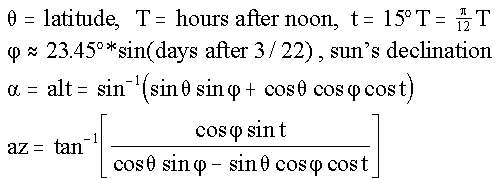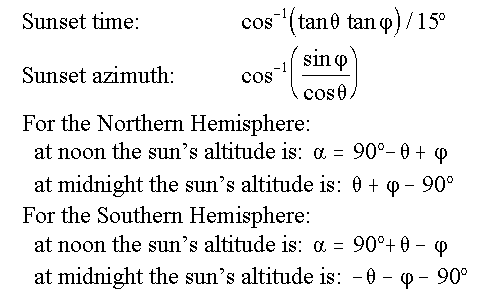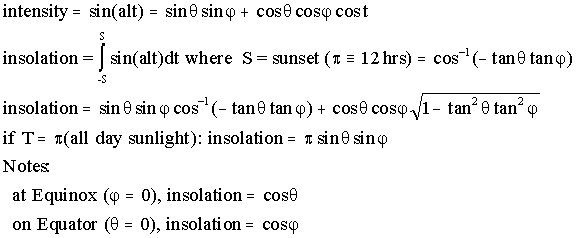Sun Positions using
simple approximations
by
Prof.
Richard B. Goldstein of Providence College
- In the graphical output the sun's
azimuth is shown hourly on the left. The red line shows
the current position and the blue lines show the sunrise and
sunset if they occur.
- The black pie outlined segment on the
right shows the extent of the sun's altitude during the full 24
hours from midnight to noon to midnight. Red indicates it
is the day and how high the sun's altitude is currently;
likewise, blue indicates it is night and how low the sun's
position is below the surface currently.
- For the diagram on the bottom the
sun's hourly positions are shown for winter solstice, equinox,
and summer solstice. The elliptical orbit is in red and
the sun solid yellow with a red outline when it is day and the
elliptical orbit is in blue and the sun has a blue dot and blue
outline when it is night. The hours of midnight, 6 AM,
noon, and 6 PM are shown in solid green.
- For those interested: Sundial
Calculations and Diagram
|
The following equations were used (derivation):



Commercial sites:

Return to Index



